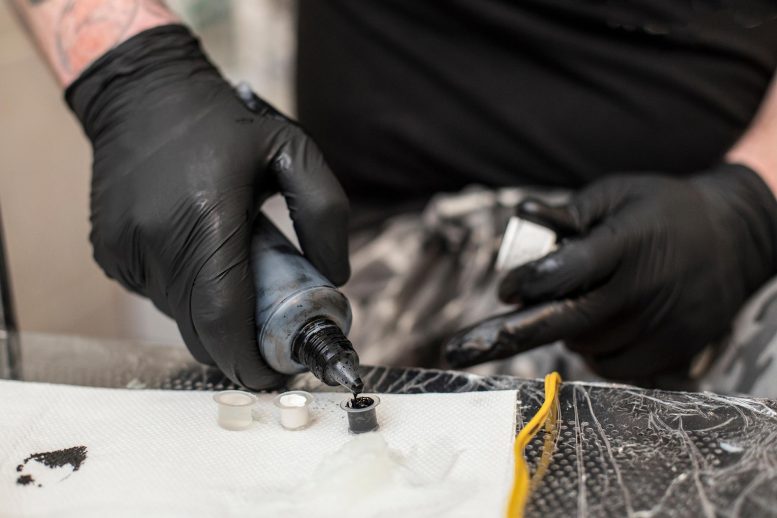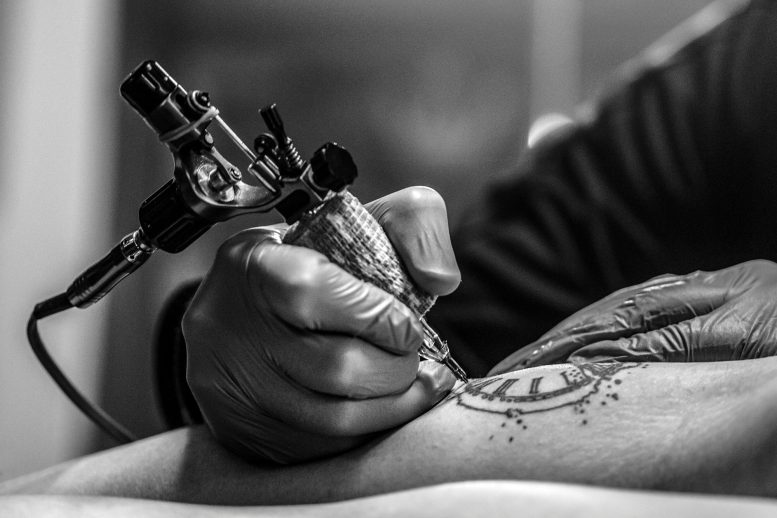
“Surprisingly, no dye shop makes pigment specific for tattoo ink.”
Tattoos are a true art form, featuring everything from life-like faces to elaborate nature scenes. People have decorated their bodies for millennia for ceremonial and religious reasons. However, many people today adorn themselves with these images as a form of self-expression. But the inks used for tattoos are unregulated in the United States, resulting in products whose components are largely a mystery. Now, scientists have analyzed almost 100 inks and report that even when these products include an ingredient label, the lists are often inaccurate. The research team also detected small particles that could be harmful to cells.
The scientists will present their results today (August 24, 2022) at the fall meeting of the American Chemical Society (ACS). ACS Fall 2022 is a hybrid meeting being held virtually and in person from August 21–25, with on-demand access available from August 26–September 9. The meeting features nearly 11,000 presentations on a wide range of science topics.

“Every time we looked at one of the inks, we found something that gave me pause.”
“The idea for this project initially came about because I was interested in what happens when laser light is used to remove tattoos,” says John Swierk, Ph.D., the project’s principal investigator. “But then I realized that very little is actually known about the composition of tattoo inks, so we started analyzing popular brands.”
Swierk and undergraduates in his laboratory interviewed tattoo artists to see what they knew about the inks they use on their clients. Although the artists could quickly identify a brand they preferred, they didn’t know much about its contents. “Surprisingly, no dye shop makes pigment specific for tattoo ink,” Swierk explains. “Big companies manufacture pigments for everything, such as paint and textiles. These same pigments are used in tattoo inks.” He also notes that tattoo artists must be licensed in the locales where they operate for safety reasons, yet no federal or local agency regulates the contents of the inks themselves.
Tattoo inks contain two parts: a pigment and a carrier solution. The pigment could be a molecular compound such as a blue pigment; a solid compound such as titanium dioxide, which is white; or a combination of the two compound types such as light blue ink, which contains both the molecular blue pigment and titanium dioxide. The carrier solution transports the pigment to the middle layer of skin and usually helps make the pigment more soluble. It can also control the viscosity of the ink solution and sometimes includes an anti-inflammatory ingredient.

Tattoo artists must be licensed in the locales where they operate for safety reasons, yet no federal or local agency regulates the contents of the inks themselves.
Swierk’s research team at Binghamton University (State University of New York) has been investigating the particle size and molecular composition of tattoo pigments using a variety of techniques. These include Raman spectroscopy, nuclear magnetic resonance spectroscopy, and electron microscopy. From these analyses, they have confirmed the presence of ingredients that aren’t listed on some labels. For instance, in one case ethanol was not listed, but the chemical analysis showed it was present in the ink. The research team has also been able to identify what specific pigments are present in some inks.
“Every time we looked at one of the inks, we found something that gave me pause,” Swierk says. “For example, 23 of 56 different inks analyzed to date suggest an azo-containing dye is present.” Although many azo pigments do not cause health concerns when they are chemically intact, bacteria or ultraviolet light can degrade them into another nitrogen-based compound that is a potential carcinogen, according to the Joint Research Center, which provides independent scientific advice to the European Union.
In addition, the team has analyzed 16 inks using electron microscopy, and about half contained particles smaller than 100 nm. “That’s a concerning size range,” says Swierk. “Particles of this size can get through the cell membrane and potentially cause harm.”
After the scientists run a few more tests and have the data peer-reviewed, they will add the information to their website “What’s in My Ink?” “With these data, we want consumers and artists to make informed decisions and understand how accurate the provided information is,” says Swierk.
The researchers acknowledge support and funding from Binghamton University (State University of New York).
For more information about tattoos, watch this video from ACS Reactions.
Title
What’s in my ink: the analysis of tattoo ink composition
Abstract
The composition of tattoo inks is widely unknown due to the lack of FDA regulation. Work is being done to separate the different components in the ink and identify them through different analytical techniques including UV-visible, IR, NMR, and Raman spectroscopies, LCMS, microwave acid digestion, and ICP-MS. Tattoo removal is also a cause for concern as it is not known how the ink breaks down or what products form. Similar analytical techniques can be used to analyze these photoproducts after laser photolysis focusing on products potentially harmful to human health.









Be the first to comment on "Exposing What’s in Tattoo Ink – You Might Be Surprised"